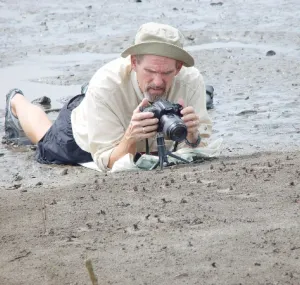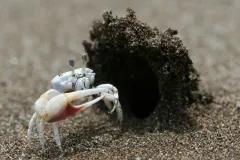
John Christy
John spent his youth in the fog in San Francisco playing in the halls of the Steinhart Aquarium, the California Academy of Sciences and the de Young Museum in Golden Gate Park. On weekends with favorable tides, his family drove up the coast to spend the afternoon “tidepooling.” And for vacations they backpacked in the Marble Mountains, Sierra and Cascades, wherever they were least likely to encounter others on foot. Only later did he realize that not all young boys had fathers who took great joy and pride in identifying and telling stories about most of the flora and fauna of the western states. Curiosity about nature, how it works, and why—instilled by these early experiences—formed the foundation of what was to come.
A biology major at Lewis and Clark college with an intense interest in literature and philosophy, John was headed to medical school when he discovered the concept of natural selection, which he still thinks is the most important and powerful idea in all of western thought. An almost random single application to grad school at Cornell University resulted in an acceptance letter followed quickly by a nearly non-stop road trip across the US (an inordinate time spent crossing Montana!) in a VW bug loaded to the headliner with a stereo and speakers, all the best LPs from the 60’s, and other essentials.
An early field course in methods in behavior and ecology transported John from the dark cold days of an Ithaca spring to the much warmer and sunnier Gulf Coast of Florida where he first saw and studied fiddler crabs. But primate behavior, particularly howler monkey social behavior, had become John’s passion (why DO they howl?), so John first had to find out first-hand how difficult it is to study big mammals in the tropics. Tired of looking up with craned neck high in the canopy at silhouettes of what he thought were howler monkeys doing uncertain things, he instead waited for the tide to recede, opened a lawn chair, picked up a pair of binoculars, and proceeded to spend the next 40 years—30 of those in Panama at the Smithsonian Tropical Research Institute—observing and doing experiments in the field to understand the reproductive behavior and ecology of fiddler crabs.
Contributed Content


